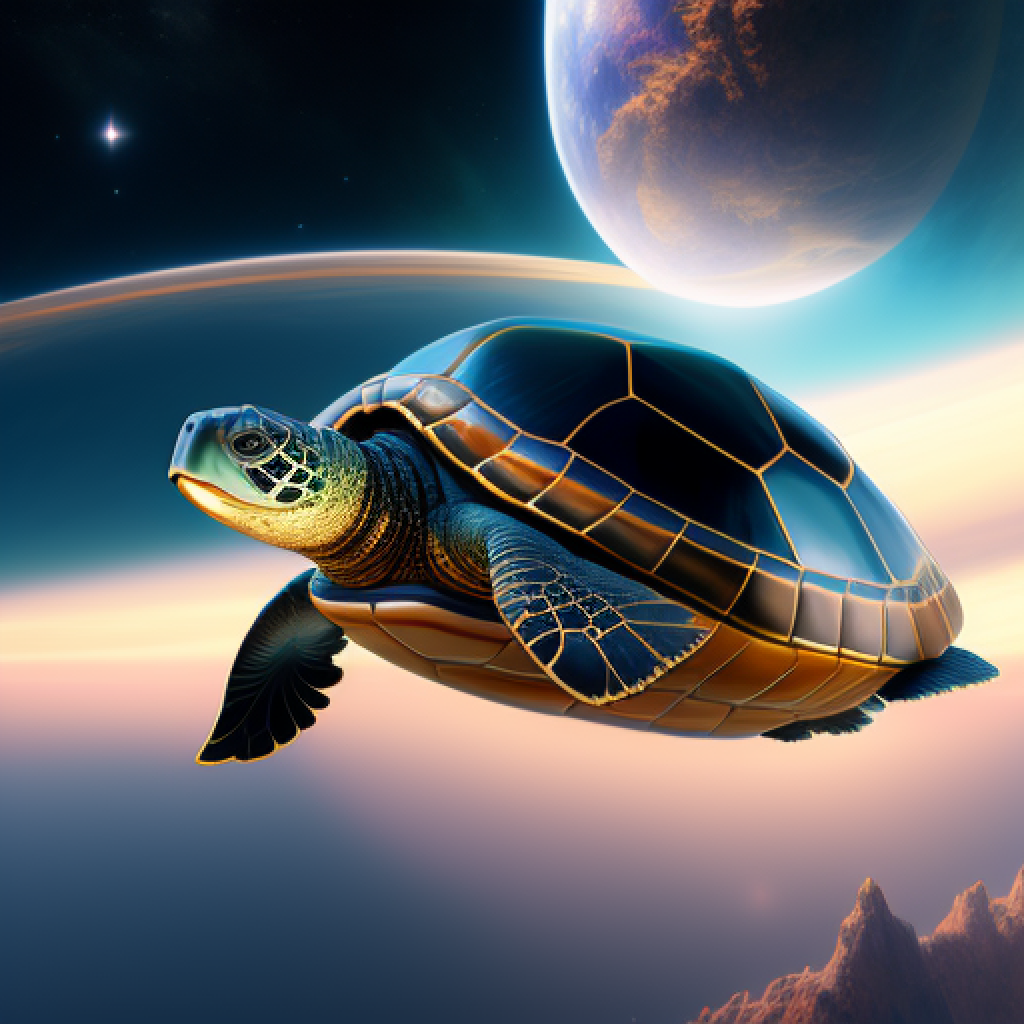Intellectual Property, Giants, Apple pie, and Turtles

We often admire the achievements of great people who have made remarkable contributions to science, art, literature, and other fields of human endeavor. And rightfully so. We marvel at their discoveries, inventions, creations, and insights that have changed the world for the better. But we should also remember that these achievements are not isolated events. They are built on the work of those who came before them.
The phrase “standing on the shoulders of giants” captures this idea perfectly. It means that we use the knowledge and wisdom of previous thinkers or experts to reach new heights or make further progress. The phrase is attributed to Isaac Newton, who wrote in a letter to his rival Robert Hooke in 1675: “If I have seen further, it is by standing on the shoulders of giants.” Newton was acknowledging that his scientific achievements were built upon the work of previous great minds like Descartes and Galileo.
Fun fact: Some scholars believe, however, that Newton was being condescending when he used that phrase. Hooke was, to Newton, a nemesis, a blowhard, a curmudgeon, and downright contemptuous of Isaac Newton. In short, they weren't exactly friends.
The question of who gets credit for an idea is captured, in all its nuance and controversy when discussing intellectual property, sometimes shortened to IP. Unfortunately, for me, IP also means Internet Protocol, so I'll spell out this IP so as not to confuse others like me. As usual, I digress...
Intellectual property refers to the legal rights that protect creative works and inventions. This can include literary, artistic, and musical works, as well as inventions, designs, and symbols. And how, exactly, do we protect intellectual property? Through a variety of legal means, including copyrights, trademarks, and patents.
Copyrights protect original works of authorship, such as books, articles, music, and artwork. Trademarks protect symbols, names, and logos that are used to identify and distinguish goods or services in the marketplace. Patents protect inventions, processes, and designs that are novel, non-obvious, and useful.
Novel and non-obvious. Aye, there's the rub!
Trademarks stand apart here because they are a bit like your name, or your driver's license. While they qualify as intellectual property, they are really protected identifiers to make sure there's no confusion as to who, or which company, is being represented.
Intellectual property rights give the creator or inventor exclusive control over the use, distribution, and licensing of their work or invention. This means that others must obtain permission or a license from the owner to use or reproduce the work or invention. In theory, intellectual property rights help to encourage creativity and innovation by providing a way for creators and inventors to profit from their work.
However, intellectual property rights can also be a source of controversy and debate. Balancing the need to protect intellectual property with the desire to promote innovation and creativity is an ongoing challenge, and let's be clear here; should the owner of a specific intellectual property even get that much credit?
Patent trolls, anyone?
Each generation builds upon the knowledge and accomplishments of their predecessors, adding to and refining existing ideas and inventions. Every scientific discovery, technological advancement, artistic masterpiece, and cultural tradition is the result of a long chain of innovation, collaboration, and improvement. This includes software, hardware, and all of the marvellous technological gizmos we so love.
Acknowledging and respecting the contributions of those who came before us is essential to making further progress. By studying the work of our predecessors, we gain a deeper understanding of that work and can build upon their achievements to create something new and transformative.
“If I have seen further, it is by standing on the shoulders of giants.”
The metaphor reminds us that we are never alone, nor the first, in our quest for knowledge and understanding, including our desire to create something new and exciting. We are part of a long tradition of human inquiry and exploration that spans across time and space. Go back far enough, and your ancestors were fish. As a result, we owe a debt of gratitude to those who have paved the way for us with their discoveries and insights. We should also be humble enough to recognize our own limitations and understand that we are always building upon the work of others.
Carl Sagan once said that if you want to make an apple pie from scratch, you must first invent the universe.
When considering intellectual property, it's important to give credit where credit is due. From the legal murkiness of intellectual property law, copyright law, and patent law, it means acknowledging that something came before. No one creates something out of nothing. To do so, you'll need to invent the universe. Go back to the Big Bang.
My passion for open-source software is intertwined in this concept. Ideas are built upon other ideas. Software is built upon other software. And open-source software is built upon the idea that we all stand on the shoulders of giants. Which brings us back to Newton.
Isaac Newton, back in 1675, was not the first to use the "shoulders of giants" metaphor either. So, let's jump back in time to 1651 when a guy named George Herbert, writing in "Jacula Prudentum".
"A dwarf on a giant's shoulders sees farther of the two."
A little further back, in 1622, Stella Didacus, in "Eximii verbi divini – CONCIONATORIS ORDINNIS MINORUM – Regularis Observantiae", wrote the following:
"Dwarfs on the shoulders of giants see further than the giants themselves."
Could this have been the original? Nope. Just one year before, in 1621, Robert Burton, in "The Anatomy of Melancholy", opined:
"A dwarf standing on the shoulders of a giant may see farther than a giant himself."
Was that the original? Not a chance. In 1159, a somewhat more pedantic John of Salisbury, wrote in "Metalogicon":
"Bernard of Chartres used to say that we are like dwarfs on the shoulders of giants, so that we can see more than they, and things at a greater distance, not by virtue of any sharpness on sight on our part, or any physical distinction, but because we are carried high and raised up by their giant size."
Great. We finally have the original. But wait! In 1130, Bernard of Chartres said the following:
"We are like dwarfs standing [or sitting] upon the shoulders of giants, and so able to see more and see farther than the ancients."
Who knows what source he was inspired by? I won't go any further back but consider a more recent source, namely the band R.E.M. from their 1987 album, "Document".
"standing on the shoulders of giants leaves me cold."
Pablo Picasso is famously quoted as saying, "Good artists copy, great artists steal." Funny enough, this quote can be attributed to T.S. Eliot, who wrote: "Immature poets imitate; mature poets steal; bad poets deface what they take, and good poets make it into something better, or at least something different."
Sigh.
So, what do you think? I'll tell you what others think.
"I think, therefore I am." – René Descartes, Le Discours de la Mèthode, 1637
"I am, therefore I think." – Friedrich Nietzsche
"I think that I think, therefore, I think that I am." – Ambrose Bierce, The Devil's Dictionary, 1911
"I think I am. Therefore, I am . . . I think." – George Carlin
"I don't think, so, therefore I'm probably not." – anonymous
That's a lot of thinking about thinking and sometimes not thinking, the latter of which probably involves some amount of thinking, therefore . . . but I digress.
I started this whole thing by mentioning a turtle. What about that turtle?
Well, the story goes that Bertrand Russell once gave a public lecture on astronomy. He described how the Earth orbits around the sun and how the sun, in turn, orbits around the centre of a vast collection of stars called our galaxy. At the end of the lecture, a little old lady at the back of the room got up and said: "What you have told us is rubbish. The world is really a flat plate supported on the back of a giant tortoise."
The scientist gave a superior smile before replying, "What is the tortoise standing on?"
"You're very clever, young man, very clever," said the old lady. "But it's turtles all the way down."
Of course, I've heard versions of that story where Albert Einstein stands in for Bertrand Russell, so who knows?
